 The distinction between nominal and real values in one of the ‘threshold concepts’ in economics. These are concepts that are fundamental to a discipline and which occur again and again. The distinction between nominal and real values is particularly important when interpreting and analysing data. We show its importance here when analysing the latest retail sales data from the Office for National Statistics.
The distinction between nominal and real values in one of the ‘threshold concepts’ in economics. These are concepts that are fundamental to a discipline and which occur again and again. The distinction between nominal and real values is particularly important when interpreting and analysing data. We show its importance here when analysing the latest retail sales data from the Office for National Statistics.
Retail sales relate to spending on items such as food, clothing, footwear, and household goods (see). They involve sales by retailers directly to end consumers whether in store or online. The retail sales index for Great Britain is based on a monthly survey of around 5000 retailers across England, Scotland and Wales and is thought to capture around 93 per cent of turnover in the sector.
Estimates of retail sales are published in index form. There are two indices published by the ONS: a value and volume measure. The value index reflects the total turnover of business, while the volume index adjusts the value index for price changes. Hence, the value estimates are nominal, while the volume estimates are real. The key point here is that the nominal estimates reflect both price and volume changes, whereas the real estimates adjust for price movements to capture only volume changes.
The headline ONS figures for September 2023 showed a 0.9 per cent volume fall in the volume of retail sales, following a 0.4 per cent rise in August. In value terms, September saw a 0.2 per cent fall in retail sales following a 0.9 per cent rise in August. Monthly changes can be quite volatile, even after seasonal adjustment, and sensitive to peculiar factors. For example, the unusually warm weather this September helped to depress expenditure on clothes. It is, therefore, sensible to take a longer-term view when looking for clearer patterns in spending behaviour.
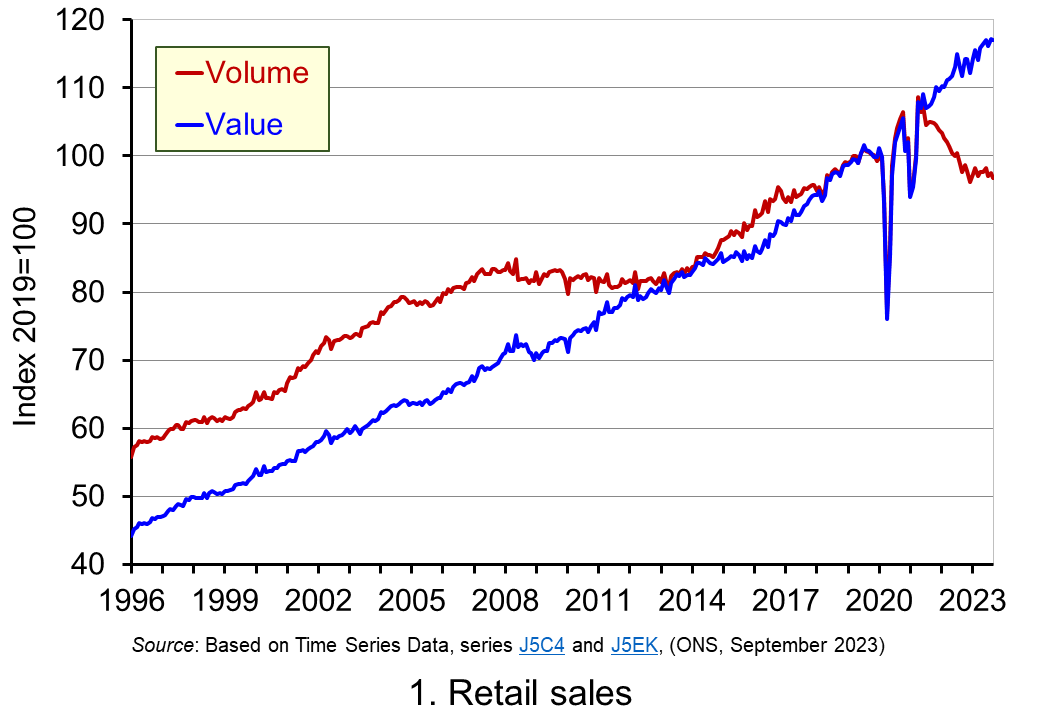 Chart 1 plots the value and volume of retail sales in Great Britain since 1996. (Click here for a PowerPoint of this and the other two charts). In value terms, retail sales spending increased by 165 per cent, whereas in volume terms, spending increased by 73 per cent. This difference is expected in the presence of rising prices, since nominal growth, as we have just noted, reflects both price and volume changes. The chart is notable for capturing two periods where the volume of retail spending ceased to grow. The first of these is following the global financial crisis of the late 2000s. The period from 2008 to 2013 saw the volume of retail sales stagnate and flatline with a recovery in volumes only really starting to take hold in 2014. Yet in nominal terms retail sales grew by around 16 per cent.
Chart 1 plots the value and volume of retail sales in Great Britain since 1996. (Click here for a PowerPoint of this and the other two charts). In value terms, retail sales spending increased by 165 per cent, whereas in volume terms, spending increased by 73 per cent. This difference is expected in the presence of rising prices, since nominal growth, as we have just noted, reflects both price and volume changes. The chart is notable for capturing two periods where the volume of retail spending ceased to grow. The first of these is following the global financial crisis of the late 2000s. The period from 2008 to 2013 saw the volume of retail sales stagnate and flatline with a recovery in volumes only really starting to take hold in 2014. Yet in nominal terms retail sales grew by around 16 per cent.
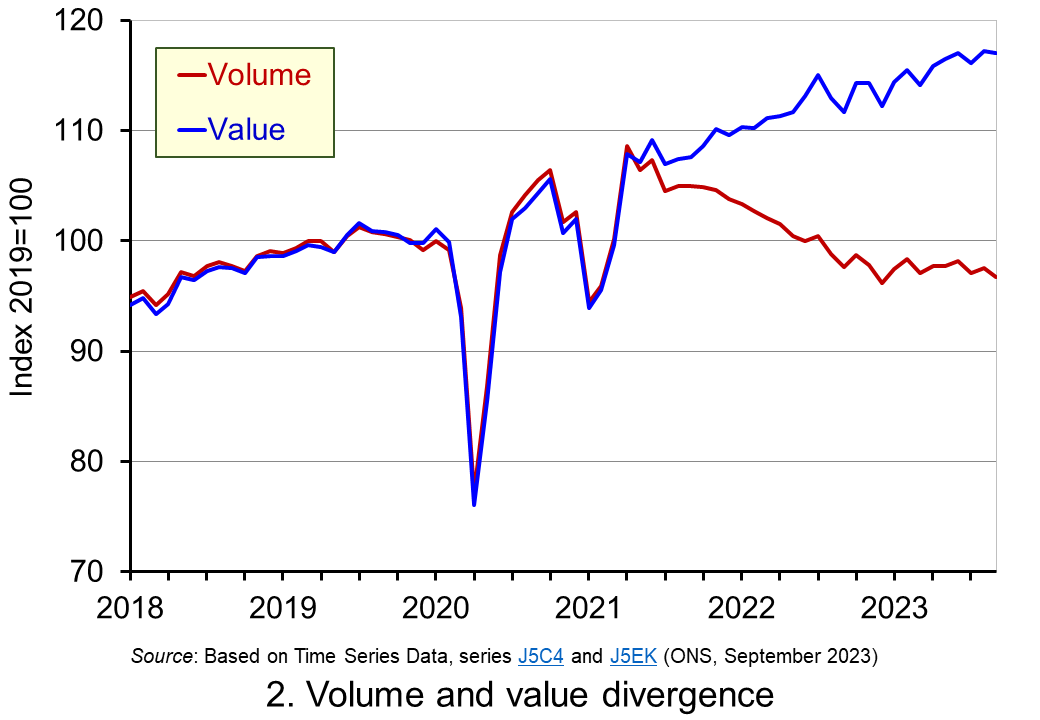 The second of the two periods is the decline in the volume of retail sales from 2021. To help illustrate this more clearly, Chart 2 zooms in on retail sales over the past five years or so. We can see a significant divergence between the volume and value of retail sales. Between April 2021 and September 2023, the volume of retail sales fell by 11%. In contrast, the value of retail sales increased by 8.4%. The impact of the inflationary shock and the consequent cost-of-living crisis that emerged from 2021 is therefore demonstrated starkly by the chart, not least the severe drag that it has had on the volume of retail spending. This has meant that the aggregate volume of retail sales in September 2023 was only back to the levels of mid-2018.
The second of the two periods is the decline in the volume of retail sales from 2021. To help illustrate this more clearly, Chart 2 zooms in on retail sales over the past five years or so. We can see a significant divergence between the volume and value of retail sales. Between April 2021 and September 2023, the volume of retail sales fell by 11%. In contrast, the value of retail sales increased by 8.4%. The impact of the inflationary shock and the consequent cost-of-living crisis that emerged from 2021 is therefore demonstrated starkly by the chart, not least the severe drag that it has had on the volume of retail spending. This has meant that the aggregate volume of retail sales in September 2023 was only back to the levels of mid-2018.
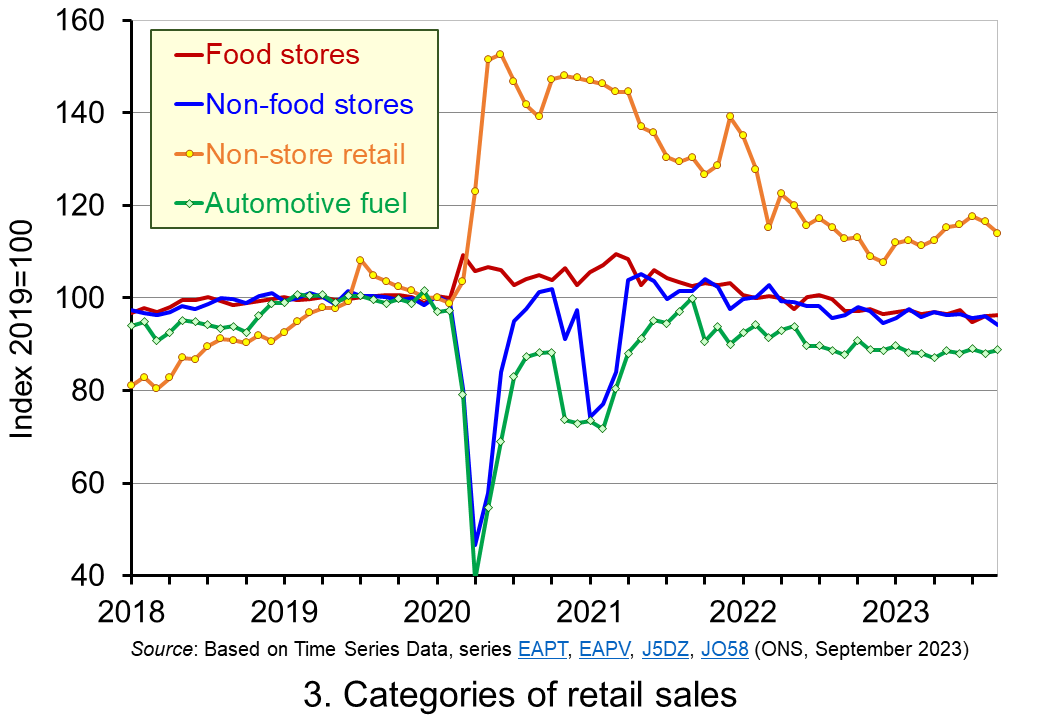 Finally, Chart 3 shows the patterns in the volumes of retailing by four categories since 2018: specifically, food stores, predominantly non-food stores, non-store retail, and automotive fuel. The largest fall in the volume of retail sales has been experienced by non-store retailing – largely online retailing. From its peak in December 2021, non-store retail sales decreased by 18% up to September 2023. While this needs to be set in the context of the volume of non-store retail purchases being 15% higher than in February 2020 before the pandemic lockdowns were introduced, it is nonetheless indicative of the pressures facing online retailers.
Finally, Chart 3 shows the patterns in the volumes of retailing by four categories since 2018: specifically, food stores, predominantly non-food stores, non-store retail, and automotive fuel. The largest fall in the volume of retail sales has been experienced by non-store retailing – largely online retailing. From its peak in December 2021, non-store retail sales decreased by 18% up to September 2023. While this needs to be set in the context of the volume of non-store retail purchases being 15% higher than in February 2020 before the pandemic lockdowns were introduced, it is nonetheless indicative of the pressures facing online retailers.
Importantly, the final chart shows that the pressures in retailing are widespread. Spending volumes on automotive fuels, and in food and non-food stores are all below 2019 levels. The likelihood is that these pressures will persist for some time to come. This inevitably has potential implications for retailers and, of course, for those that work in the sector.
Articles
Statistical bulletin
Data
Questions
- Why does an increase in the value of retail sales not necessarily mean that their volume has increased?
- In the presence of deflation, which will be higher: nominal or real growth rates?
- Discuss the factors that could explain the patterns in the volume of spending observed in the different categories of retail sales in Chart 3.
- Discuss what types of retail products might be more or less sensitive to the macroeconomic environment.
- Conduct a survey of recent media reports to prepare a briefing discussing examples of retailers who have struggled or thrived in the recent economic environment.
- What do you understand by the concepts of ‘consumer confidence’ and ‘economic uncertainty’? How might these affect the volume of retail spending?
- Discuss the proposition that the retail sales data cast doubt on whether people are ‘forward-looking consumption smoothers’.
 HS2 has been cancelled north of Birmingham. The prime minister, Rishi Sunak, announced this at the Conservative Party conference on 4 October, some 13 years after the plan was adopted by the Labour government to build a new high-speed railway from London to Birmingham, which then would branch into two legs – one to Manchester and one to Leeds. The initial budget for this was £15.8bn to £17.4bn. When it came to power, the Conservative-Liberal coalition government ordered a review of the plan. In light of this, the government gave the green light in January 2012 for the full Y-shaped project to go ahead. The London–Birmingham leg was planned to open in 2026 and the two northern legs from 2033.
HS2 has been cancelled north of Birmingham. The prime minister, Rishi Sunak, announced this at the Conservative Party conference on 4 October, some 13 years after the plan was adopted by the Labour government to build a new high-speed railway from London to Birmingham, which then would branch into two legs – one to Manchester and one to Leeds. The initial budget for this was £15.8bn to £17.4bn. When it came to power, the Conservative-Liberal coalition government ordered a review of the plan. In light of this, the government gave the green light in January 2012 for the full Y-shaped project to go ahead. The London–Birmingham leg was planned to open in 2026 and the two northern legs from 2033.
 The project was divided into two phases: Phase 1 to Birmingham and Phase 2 to Manchester and Leeds. The Phase 1 parliamentary bill became law in February 2017 and soon after that, various construction contracts were signed. After some delays, preparation for construction work began in June 2019. There was growing doubt, however, about the viability of the northern legs.
The project was divided into two phases: Phase 1 to Birmingham and Phase 2 to Manchester and Leeds. The Phase 1 parliamentary bill became law in February 2017 and soon after that, various construction contracts were signed. After some delays, preparation for construction work began in June 2019. There was growing doubt, however, about the viability of the northern legs.
On becoming prime minister in 2019, Boris Johnson ordered an independent review of the project after estimates that the costs of the full project would be some £88bn. The review, chaired by Douglas Oakervee, was published in December 2019 (for a link, see list of reports below). It found that costs (in 2015 prices) were likely to be between £62bn and £69bn. Nevertheless, it concluded that the project should proceed: that the original rationale for HS2 still held; that there were:
no shovel-ready alternative investments in the existing network that were available: if HS2 were to be cancelled, many years of planning work would be required to identify, design and develop new proposals; that the upgrading of existing lines would also come at a high passenger cost with significant disruption; that there would be serious consequences for the supply chain, the fragile UK construction industry and confidence in UK infrastructure planning if HS2 were to be cancelled at this late stage.
In February 2020, the prime minister announced that HS2 would go ahead, including the legs to Manchester and Leeds. The Department for Transport published a document (see source line to the following table) giving the full business case for Phase 1 and the outline case for Phase 2. The document itemised the costs and benefits as estimated at the time.
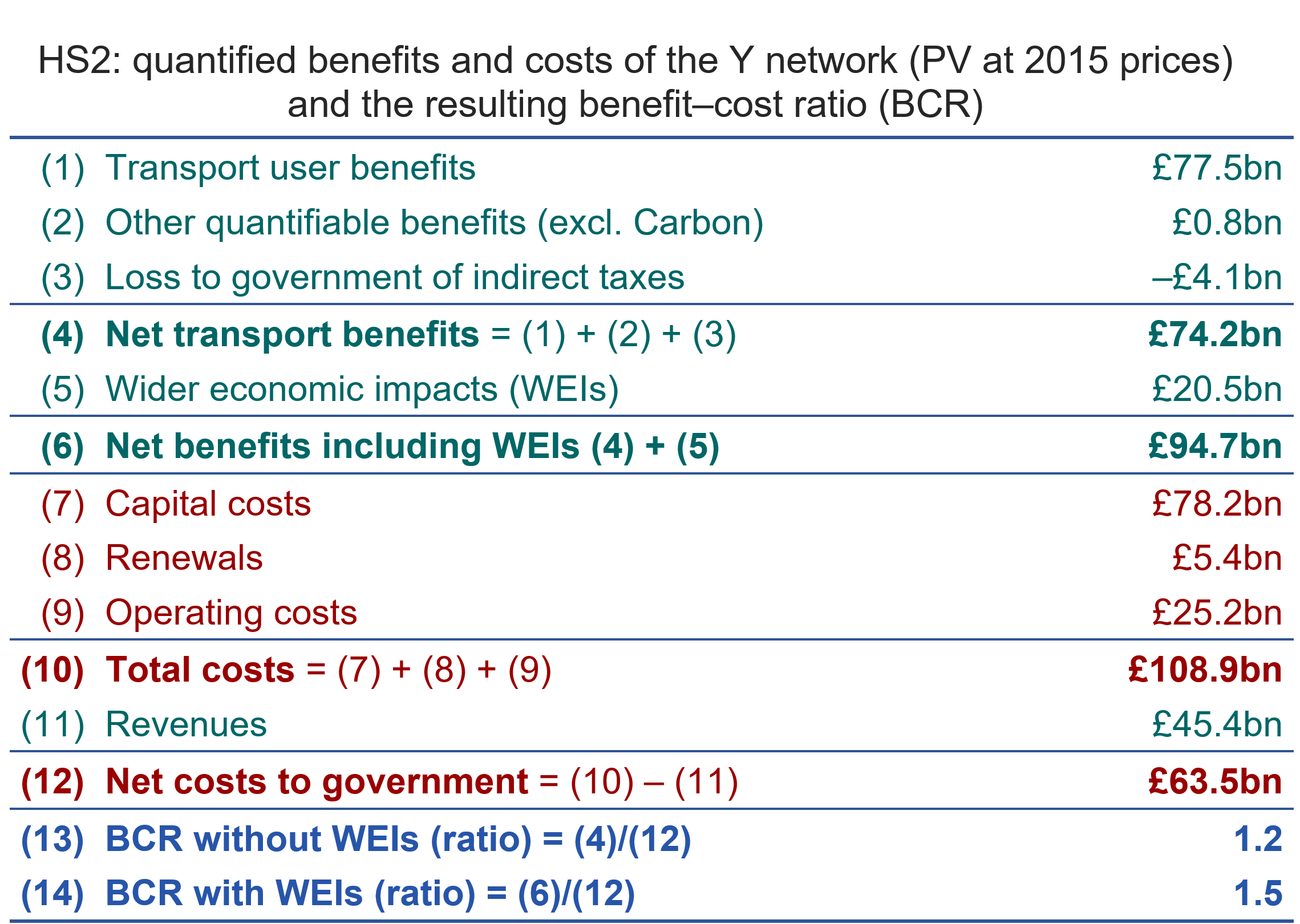
Source: Full Business Case: High Speed Two, Table 2.9, Department for Transport (April 2020)
Box 12.6 in Economics (eleventh edition) and Case study 8.16 on the Essentials of Economics (ninth edition) student website looks at these costs and benefits. The above table is taken from the box/case study. Net transport benefits (present value at 2015 prices) were estimated to be £74.2bn. These include benefits to passengers from shorter journey times, greater reliability, greater connectivity and less crowding, and reduced congestion on roads. They also include other benefits, such as a reduction in carbon emissions and a reduction in road accidents. Net benefits also include the wider benefits from greater connectivity between firms (resulting in increased specialism, trade and investment), greater competition and greater labour mobility. These wider benefits were estimated to be £20.5bn, giving total net benefits of £94.7bn.
Total costs to the government were estimated to be £108.9bn and revenues from fares to be £45.4bn, giving total net costs of £63.5bn. This gave a benefit/cost ratio of 1.5 (£94.7bn/£63.5bn). In the light of these findings, the government announced in September 2020 that the main work on the London to Birmingham leg would begin, despite the Public Accounts Committee’s finding that the project was badly off course and lacking in transparency.
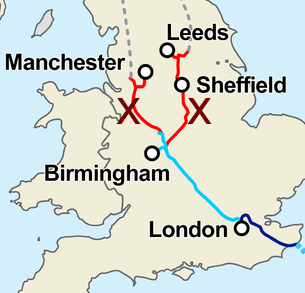
Concern was expressed over whether the Leeds leg would go ahead, but in May 2021, the transport secretary, Grant Shapps, confirmed that it would be completed. However, with the publication of the Integrated Rail Plan in November 2021 (for a link, see list of reports below), the government decided that the eastern leg of HS2 would no longer reach Leeds but instead end in the East Midlands. Then in June 2022, the link between the HS2 line near Manchester and the West Coast Main Line was scrapped. This would have allowed HS2 trains to reach Scotland.
In early 2023, it was announced that the building of the terminus at Euston was being put on hold. Many interpreted this as meaning that it was being scrapped, with trains terminating at Old Oak Common, some six miles from Central London.
Finally, as we have seen, HS2 north of Birmingham has now been scrapped and the government is seeking private-sector funding to build the terminus at Euston and complete the line from Old Oak Common.
Arguments for scrapping the northern legs
The main argument given by the government was that projected costs have risen substantially above original estimates and that by cancelling the Manchester and east Midlands legs, the money saved could be better used elsewhere. The argument is one of opportunity cost. The cost of going ahead would mean not going ahead with better-value alternatives.
The government claims that £36bn will be saved and that this will be diverted to rail, road and other transport projects, primarily (although not exclusively) in the north of England. The money would be spent between 2029 and 2040. Projects include spending additional money on the planned upgrading of the rail link between Manchester and Liverpool, Sheffield, Leeds and Hull; building a new station at Bradford; developing a mass transit system for Leeds and its surroundings; a £2.5bn fund for improved transport for smaller cities, towns and the countryside in the north of England; extra funding for transport in the east and west Midlands, including funding a Midlands Rail Hub. Out of the £36bn, £6.5bn would be for projects elsewhere, including road improvement.
 In order to judge whether the diversion of funds represents a better use of money, a full analysis of costs and benefits of the various projects would need to be conducted and compared with an updated cost–benefit analysis of continuing with the legs to Manchester and the east Midlands and possibly reinstating the Leeds leg too.
In order to judge whether the diversion of funds represents a better use of money, a full analysis of costs and benefits of the various projects would need to be conducted and compared with an updated cost–benefit analysis of continuing with the legs to Manchester and the east Midlands and possibly reinstating the Leeds leg too.
One possible benefit for the government is a political one. It hopes that promising more local projects rather than HS2 will appeal to the electorate in large parts of the north of England who are suffering from poor and unreliable transport links. However, most of these projects will be started well beyond the next election and this political gain may turn out to be small. Indeed, cancelling HS2 may breed cynicism, with people wondering whether any promised new projects will actually be delivered.
Arguments against scrapping the northern leg(s)
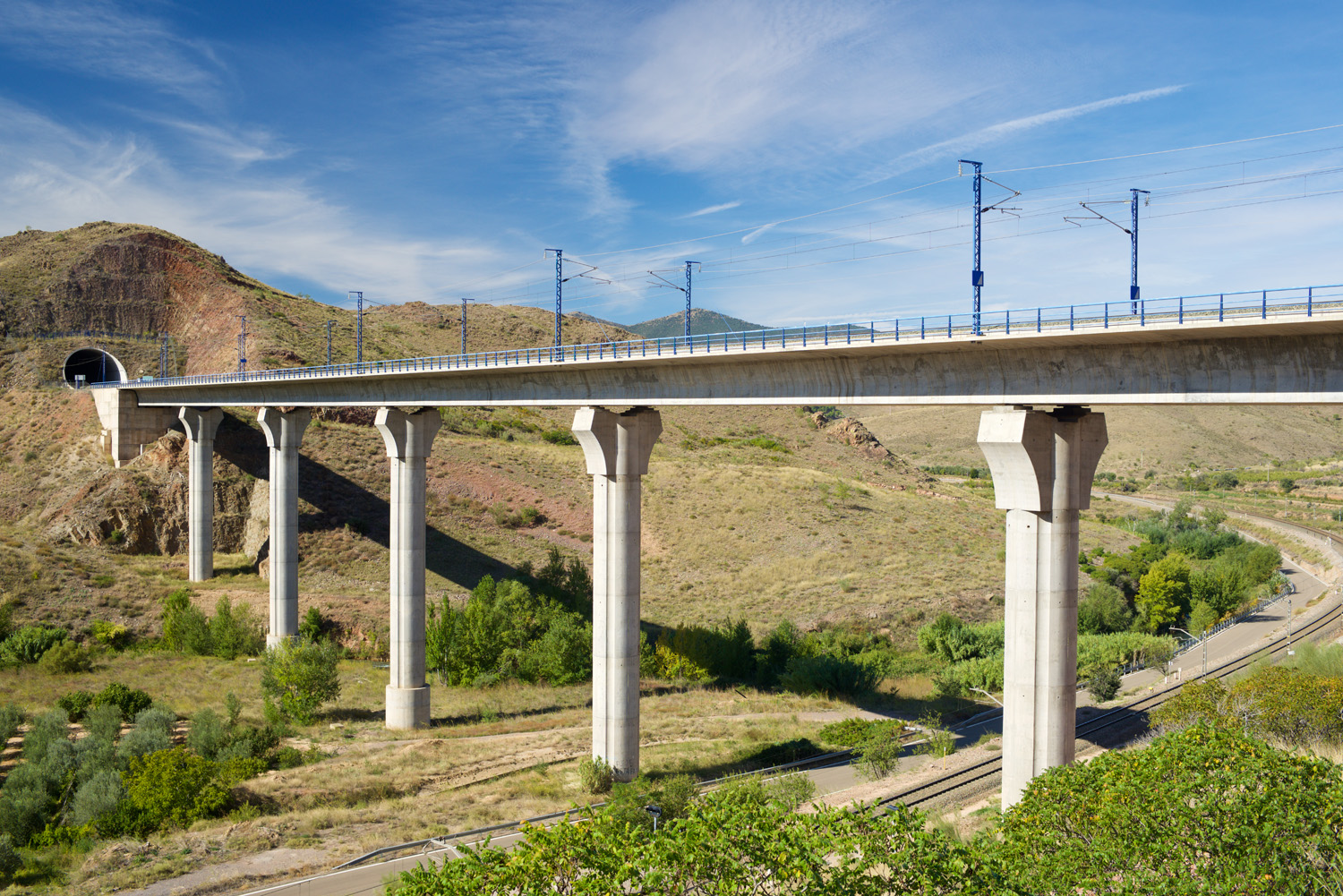 The benefits originally identified from HS2 will now be lost. It is not just that the northern legs of HS2 would have provided faster travel to Manchester and Leeds, but the new lines would have reduced congestion for slower trains and freight on existing lines. This has been the experience in countries such as Japan and Spain, which have invested heavily in new, separate high-speed lines.
The benefits originally identified from HS2 will now be lost. It is not just that the northern legs of HS2 would have provided faster travel to Manchester and Leeds, but the new lines would have reduced congestion for slower trains and freight on existing lines. This has been the experience in countries such as Japan and Spain, which have invested heavily in new, separate high-speed lines.
When the line is completed to Birmingham, the HS2 trains will be able to continue north of Birmingham on existing lines. But these lines are heavily congested, which will limit the number of HS2 trains that can use them. Also they will be restricted to 110 mph on these lines as they have no tilting mechanism. Also they will have a maximum capacity of only 550 seats (a single train set) as the platforms at Manchester Piccadilly cannot accommodate double-set trains. The existing Pendalino trains on the West Coast mainline can travel at 125 mph as they do have the tilting mechanism and they have a higher capacity of 607 seats.
Then there are the signals that cancellation sends to industry about whether governments can be trusted to follow through on public-sector projects. Many business had expanded or relocated to places near the HS2 routes. Many others will wonder whether the promised new projects will go ahead. Indeed, shortly after giving a list of the projects (some of which had already been built or were being built), the list was removed from the government website. There is already a mood of scepticism amongst the electorate. Polling following the initial announcement showed that a majority believed that it was unlikely that the Conservatives would deliver the other projects if they won the next election.
The opportunity cost argument that the money would be better spent on alternative transport projects is predicated on various assumptions. One is that the money will actually be spent, which, as we have seen, people consider doubtful. Another is that the only choice is either spending a fixed pot of money on the northern leg(s) of HS2 or spending it on the alternative projects announced by the prime minister. It could be argued that the government should proceed with both the full HS2 and these other projects, and fund it by extra taxation. Investment as a percentage of GDP is low in the UK compared with other countries. Over the past 10 years, it has averaged 17.8% in the UK. This compares with 21.0% in the USA, 21.5% in Germany, 23.7% in France and 25.4% in Japan. Also, public-sector investment is low in the UK compared with that in other countries.
Assessing the arguments
Many of the costs and benefits of long-term projects, such as HS2, occur many years hence. There is, therefore, a great deal of uncertainty over their magnitude. This makes it extremely difficult to reach a clear conclusion over the desirability of cancelling HS2 north of Birmingham or continuing with it. Under such circumstances, politics tends to dominate decision making.
Articles
- Rishi Sunak promises more rail, road and bus links
BBC News (4/10/23)
- The HS2 rail line: what has been cut and what will replace it?
Financial Times Gill Plimmer, Phillip Georgiadis, Jennifer Williams and Jim Pickard (4/10/24)
 HS2 explained: What is the route now, what are the costs and why is the Manchester leg being axed?
HS2 explained: What is the route now, what are the costs and why is the Manchester leg being axed?Sky News, Sarah Taaffe-Maguire (5/10/23)
- Rishi Sunak finally axes HS2 in the north – weeks after The Independent revealed plan
Independent, Jon Stone and Adam Forrest (4/10/23)
- HS2 | Timeline of a mistreated megaproject
New Civil Engineer, Rob Hakimian (4/10/23)
- HS2 scale-back creates ‘chilling effect’
Construction News, Catherine Moore (5/10/23)
- How HS2 caused the UK to lose focus on ‘levelling up’ during years of high-speed rail delays
The Conversation, Steven McCabe (28/9/23)
- What Rishi Sunak scrapping HS2 – and promising a new ‘Network North’– means for the north of England
The Conversation Tom Arnold (4/10/23)
- HS2: Why Rishi Sunak’s big gamble may not pay off
BBC News, Faisal Islam (5/10/23)
- ‘Managed decline’: the uncertain future for British rail after cuts to HS2
Financial Times, Philip Georgiadis, Gill Plimmer and Jim Pickard (6/10/23)
 Investment outside London could bring £100bn boost to economy, says Bank of England’s former chief economist
Investment outside London could bring £100bn boost to economy, says Bank of England’s former chief economistChannel 4 News, Helia Ebrahimi interviews Andy Haldane (27/9/23)
- HS2 surgery is the wrong choice say leading academics
RailTech, Simon Walton (3/10/23)
- Why has HS2 ended up being so expensive?
The Guardian, Gwyn Topham (25/9/23)
- Ten problems with Rishi Sunak’s Network North announcement
The Guardian, Helen Pidd (5/10/23)
- International investors are laughing at the HS2 shambles
The Guardian, Nils Pratley (4/10/23)
- Spain’s high-speed trains aren’t just efficient, they have transformed people’s lives
The Guardian, María Ramírez (11/10/23)
Government Press Release
Reports
Questions
- Why have the costs of HS2 (in real terms) risen substantially since the first estimates in 2012?
- Identify the types of environmental costs and benefits of the full Y-shaped HS2 project. Why might such costs and benefits be difficult to measure?
- Is the opportunity of cost of proceeding with the full Y-shaped HS2 a range of other transport projects? Explain.
- Find out the level of public-sector investment expenditure as a percentage of (a) total government expenditure and (b) GDP in some other developed countries and compare them with the UK. Comment on your findings.
- Should the decision whether or not to go ahead with the Manchester and east Midlands legs have been delayed until a new updated cost–benefit analysis had been conducted?
- If most of the benefits from the originally planned HS2 will be now be lost with the line ending at Birmingham, should this leg to Birmingham also be cancelled, even though many of the costs have already been incurred? Explain your reasoning.
 The United Nations International Panel on Climate Change (IPCC) has just published its most comprehensive report so far. It finds that ‘human activities, principally through emissions of greenhouse gases, have unequivocally caused global warming’. This has led to widespread and rapid changes in climate and biodiversity and to more extreme weather patterns, such as droughts, floods and hurricanes. What is more, the distribution of these effects is uneven, with communities who have contributed the least to current climate change being disproportionately affected.
The United Nations International Panel on Climate Change (IPCC) has just published its most comprehensive report so far. It finds that ‘human activities, principally through emissions of greenhouse gases, have unequivocally caused global warming’. This has led to widespread and rapid changes in climate and biodiversity and to more extreme weather patterns, such as droughts, floods and hurricanes. What is more, the distribution of these effects is uneven, with communities who have contributed the least to current climate change being disproportionately affected.
At the 2015 COP21 climate change conference in Paris (see also), it was agreed to adopt policies to limit the increase in global temperatures to ‘well below’ 2°C above pre-industrial levels and to make an effort to limit it to 1.5°C. Global temperatures have already risen 1.1°C above 1850–1900 levels and are set to reach 1.5°C in the early 2030s. Every increment of global warming will intensify ‘multiple and concurrent hazards’.
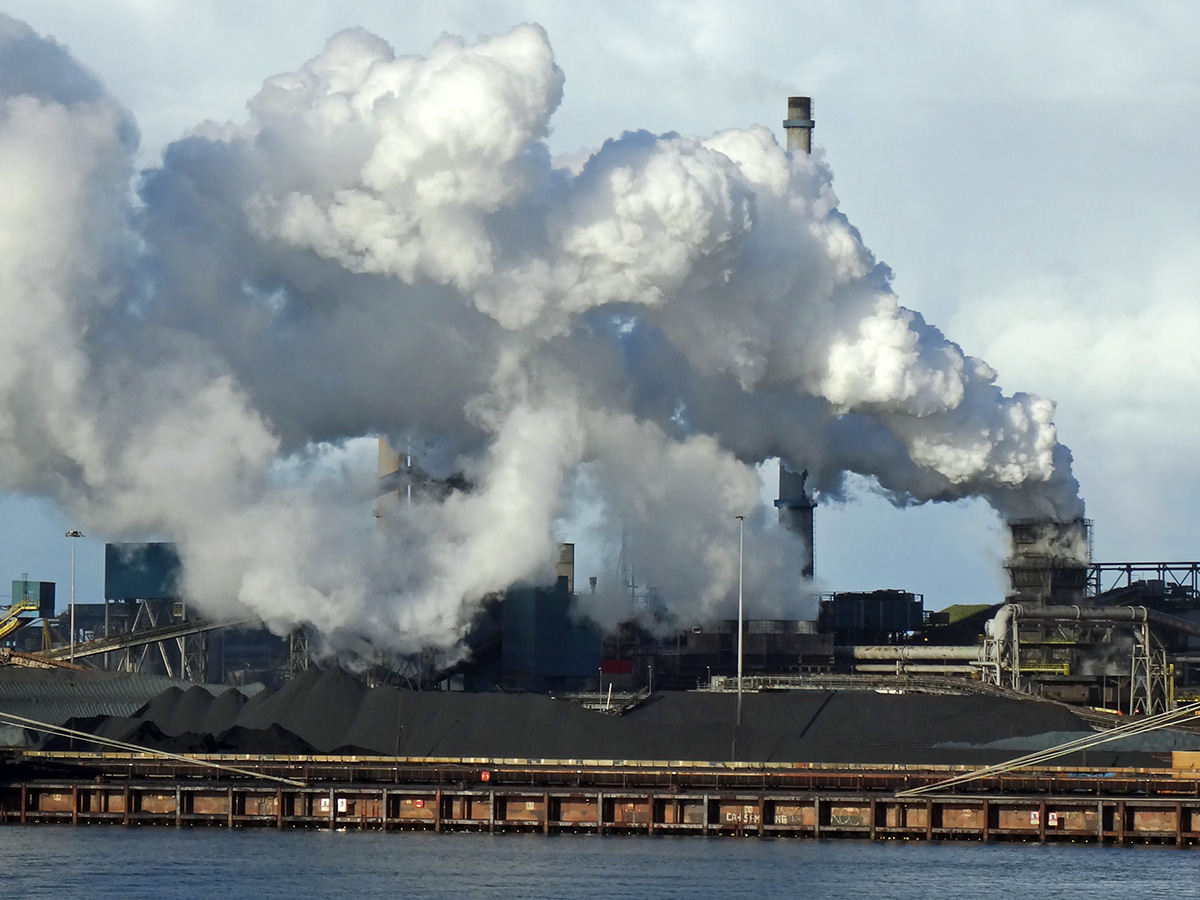 Deep, rapid and sustained reductions in emissions would slow down the rise in global temperatures, but even with such reductions, temperatures will still exceed 1.5°C in the next few years and, even under the best-case scenario, would not fall below 1.5°C again until the end of the 21st century. Under more pessimistic scenarios, global temperatures could rise to 2.7°C above pre-industrial levels by the end of the century under an intermediate greenhouse gas emissions scenario and to 4.4°C under a very high emissions scenario. Anything above 2°C would be likely to have catastrophic effects. The longer countries wait to take action, the greater the rise in global temperatures and hence the greater the damage and the more costly it will be to rectify it.
Deep, rapid and sustained reductions in emissions would slow down the rise in global temperatures, but even with such reductions, temperatures will still exceed 1.5°C in the next few years and, even under the best-case scenario, would not fall below 1.5°C again until the end of the 21st century. Under more pessimistic scenarios, global temperatures could rise to 2.7°C above pre-industrial levels by the end of the century under an intermediate greenhouse gas emissions scenario and to 4.4°C under a very high emissions scenario. Anything above 2°C would be likely to have catastrophic effects. The longer countries wait to take action, the greater the rise in global temperatures and hence the greater the damage and the more costly it will be to rectify it.
‘For any given future warming level… projected long-term impacts are up to multiple times higher than currently observed (high confidence). Risks and projected adverse impacts and related losses and damages from climate change escalate with every increment of global warming (very high confidence). Climatic and non-climatic risks will increasingly interact, creating compound and cascading risks that are more complex and difficult to manage (high confidence).’ (Paragraph B2)
But the report is not all ‘doom and gloom’. It is possible to limit global warming to 1.5°C or only a little over by making rapid, deep and, in most cases, immediate greenhouse gas emissions reductions in all sectors and reaching net zero emissions in the early 2050s. Science and technology have the answers – answers that are now much cheaper and more available than back in 2015 when the 1.5°C target was agreed. But what it does require is doing ‘everything, everywhere, all at once’. And that requires political will and the right economic incentives.
The politics and economics of achieving net zero
In terms of the politics, there is general global agreement by governments about the likely effects of climate change. And most governments agree that action needs to be taken. However, there are three key political problems.
The first is that the costs of action will be borne now, while the benefits of action will accrue over a much longer period of time. This links to the second problem – the mismatch between the lives of governments and the long-term effects of climate change. If governments put off doing anything now and merely promise that something will be done in the future, they will not have to take unpopular actions, such as raising taxes on energy, private transport and certain goods or banning various activities. Future governments will have to sort things out, by when, although the problems will be greater, the existing politicians will no longer be in power.
 The third problem concerns the distribution of the costs and benefits of action. The major emitters of carbon are the rich countries, while the major sufferers are poor people in countries subject to drought, flooding and rising sea levels. Not surprisingly, who should cut down on emissions and pay for the mitigation necessary in many of the poorer countries is a difficult political issue, which is why it’s much easier to say what needs to be achieved overall than precisely what measures should be taken by which countries.
The third problem concerns the distribution of the costs and benefits of action. The major emitters of carbon are the rich countries, while the major sufferers are poor people in countries subject to drought, flooding and rising sea levels. Not surprisingly, who should cut down on emissions and pay for the mitigation necessary in many of the poorer countries is a difficult political issue, which is why it’s much easier to say what needs to be achieved overall than precisely what measures should be taken by which countries.
These problems reflect the fact that many, if not most, of the environmental costs of production and consumption are external costs – costs borne, not by the direct producer or consumer, but by other people at other places and/or in the future.
Nevertheless, the relative costs of moving to greener production and consumption are falling. The costs of renewable energy, including solar power, onshore and offshore wind and hydroelectric power are falling relative to that generated from fossil fuels. At the same time, the take up of electric cars is likely to continue rising as battery technology improves. This does, of course, require an increase in charging infrastructure. Domestic heat pump technology is improving and home insulation methods are becoming more efficient.
Persuading consumers and firms to take account of environmental externalities could in part be achieved by education. It makes it much easier for politicians to take appropriate action now if their populations are on board. There has been increasing awareness over the years of the environmental impact of people’s actions. People have become more willing to take responsibility for the world that future generations will inherit. This is helped both by education in schools and colleges and by frequent items in the media.
But incentives also have a major part to play. To internalise environmental externalities, external costs could be taxed and external benefits subsidised.
The effect of a carbon tax on production
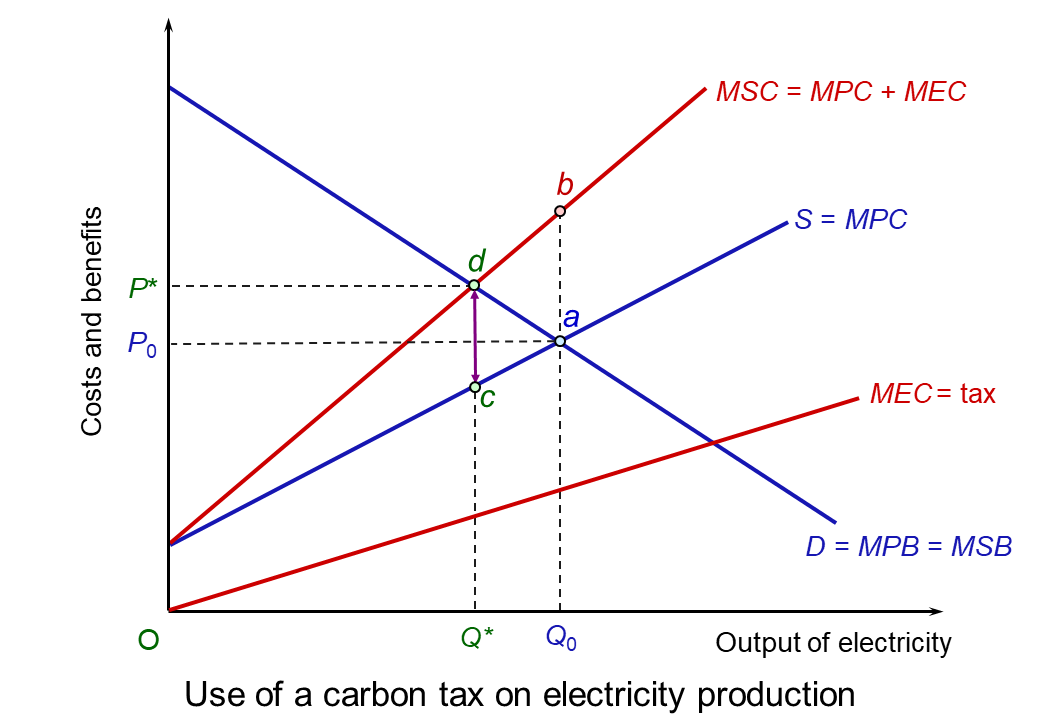 The use of taxes to reduce activities with negative environmental externalities is illustrated in the diagram (click here for a PowerPoint). It takes the case of carbon emissions from coal-fired electricity generation in a large country. To keep the analysis simple, it is assumed that all electricity in the country is generated from coal-fired power stations and that there are many such power stations, making the market perfectly competitive.
The use of taxes to reduce activities with negative environmental externalities is illustrated in the diagram (click here for a PowerPoint). It takes the case of carbon emissions from coal-fired electricity generation in a large country. To keep the analysis simple, it is assumed that all electricity in the country is generated from coal-fired power stations and that there are many such power stations, making the market perfectly competitive.
It is assumed that all the benefits from electricity production accrue solely to the consumers of electricity (i.e. there are no external benefits from consumption). Marginal private and marginal social benefits of the production of electricity are thus the same (MPB = MSB). The curve slopes downwards because, with a downward-sloping demand for electricity, higher output results in a lower marginal benefit (diminishing marginal utility).
Competitive market forces, with producers and consumers responding only to private costs and benefits, will result in a market equilibrium at point a in the diagram: i.e. where demand equals supply. The market equilibrium price is P0 while the market equilibrium quantity is Q0. However the presence of external costs in production means that MSC > MPC. In other words, MEC = b – a.
The socially optimal output would be Q* where P = MSB = MSC, achieved at the socially optimal price of P*. This is illustrated at point d and clearly shows how external costs of production in a perfectly competitive market result in overproduction: i.e. Q0 > Q*. From society’s point of view, too much electricity is being produced and consumed.
If a carbon tax of d – c is imposed on the electricity producers, it will now be in producers’ interests to produce at Q*, where their new private marginal costs (including tax) equals their marginal private benefit.
But this brings us back to the politics of measures to reduce emissions. People do not like paying higher taxes. In his latest Budget, the UK Chancellor, Jeremy Hunt, decided not to raise fuel duties by the 12p that had been previously planned, despite fuel prices having recently fallen. Meanwhile, charging prices for electric cars have risen.
Other economic measures
 A simpler method for dealing with environmental externalities is ban certain activities that omit CO2. For example, in the UK there will be a ban on the sale of new petrol and diesel cars and vans from 2030 (with the exception of some low-emission hybrids until 2035). In the EU there will be a similar ban from 2035. Clearly, such measures are only suitable when there are non-emitting alternatives.
A simpler method for dealing with environmental externalities is ban certain activities that omit CO2. For example, in the UK there will be a ban on the sale of new petrol and diesel cars and vans from 2030 (with the exception of some low-emission hybrids until 2035). In the EU there will be a similar ban from 2035. Clearly, such measures are only suitable when there are non-emitting alternatives.
Another alternative is a cap-and-trade system, such as the European Emissions Trading Scheme. It involves setting quotas for emissions and allowing firms which manage to cut emissions to sell their surplus permits to less efficient firms. This puts a price pressure on firms to be more efficient. But the quotas (the ‘cap’) must be sufficiently tight if emissions are going to be cut to desired levels. Nevertheless, it is an efficient way of cutting emissions as it gives a competitive advantage to low-emission producers.
Conclusion
If the problem of global warming is to be limited to 1.5°C, or only very little above, multiple solutions will need to be found and there must be a combination of political will, economic incentives and the mobilisation of scientific and technical know-how. As the Secretary-General of the United Nations, António Guterres, stated in launching the new report:
This report is a clarion call to massively fast-track climate efforts by every country and every sector and on every timeframe. In short, our world needs climate action on all fronts – everything, everywhere, all at once.
Report
Videos
Articles
- Climate damage is worsening faster than expected, but there’s still reason for optimism – 4 essential reads on the IPCC report
The Conversation, Stacy Morford at al (20/3/23)
- UN climate scientists are running out of ways to warn us
Vox, Rebecca Leber and Umair Irfan (20/3/23)
- Expert reaction to the AR6 synthesis report, as published by the IPCC
Science Media Centre (20/3/23)
- ‘The climate time-bomb is ticking’: The world is running out of time to avoid catastrophe, new UN report warns
CNN, Laura Paddison (20/3/23)
- UN climate report: Scientists release ‘survival guide’ to avert climate disaster
BBC News, Matt McGrath and Georgina Rannard (20/3/23)
- Five things we’ve learned from UN climate report
BBC News, Matt McGrath (20/3/23)
- Climate change: Can we really take CO2 back out the air?
BBC Future, Jocelyn Timperley (21/3/23)
- Scientists deliver ‘final warning’ on climate crisis: act now or it’s too late
The Guardian, Fiona Harvey (20/3/23)
- From climate change ‘certainty’ to rapid decline: a timeline of IPCC reports
The Guardian, Damian Carrington (20/3/23)
- Humanity at the climate crossroads: highway to hell or a livable future?
The Guardian, Damian Carrington (20/3/23)
 IPCC report: Here’s how we can defuse the ‘ticking time bomb’ of climate change
IPCC report: Here’s how we can defuse the ‘ticking time bomb’ of climate changeEuronews, Rosie Frost (21/3/23)
- Now or never: One of the biggest climate reports ever shows time is running out
NBC News, Evan Bush and Denise Chow (20/3/23)
Questions
- Why might countries not do ‘everything, everywhere, all at once’ to avert climate change?
- What might an optimist conclude from the ICC report?
- To what extent is climate change an economic problem?
- On a diagram similar to the one above, show how a subsidy could be used to internalise positive externalities.
- How might countries reduce the consumption of fossil fuels in the most efficient way? Are they likely to want to do this? Explain.
- Is a ‘cap-and-trade’ (tradable permits) system (a) an effective means of reducing emissions; (b) an efficient system?
 The UK left the EU on 31 January 2020 and entered an 11-month transition phase during which previous arrangements largely applied. On 30 December 2020, the UK and the EU signed the Trade and Cooperation Agreement (TCA) (see also), which set out the details of the post-Brexit trading arrangements between the UK and the EU after the ending of the transition period on 31 December 2020. The new arrangements have been implemented in stages so as to minimise disruption.
The UK left the EU on 31 January 2020 and entered an 11-month transition phase during which previous arrangements largely applied. On 30 December 2020, the UK and the EU signed the Trade and Cooperation Agreement (TCA) (see also), which set out the details of the post-Brexit trading arrangements between the UK and the EU after the ending of the transition period on 31 December 2020. The new arrangements have been implemented in stages so as to minimise disruption.
A major change was implemented on 1 January 2022, when full customs controls came into effect on imports into the UK from the EU. Later in the year a range of safety and security measures will be introduced, such as physical checks on live animals.
Not surprisingly, the anniversary of the TCA has been marked by many articles on Brexit: assessing its effects so far and looking into the future. Most of the articles see Brexit as having imposed net costs on the UK and the EU. They reflect the views of economists generally. As the first FT article linked below states, “The debate among economists on Brexit has rarely been about whether there would be a hit to growth and living standards, but rather how big a hit”.
The trade and GDP costs of Brexit
The Office for Budget Responsibility in October 2021 attempted to measure these costs in terms of the loss in trade and GDP. In October 2021, it stated:
Since our first post-EU referendum Economic and Fiscal Outlook in November 2016, our forecasts have assumed that total UK imports and exports will eventually both be 15 per cent lower than had we stayed in the EU. This reduction in trade intensity drives the 4 per cent reduction in long-run potential productivity we assume will eventually result from our departure from the EU.
…the evidence so far suggests that both import and export intensity have been reduced by Brexit, with developments still consistent with our initial assumption of a 15 per cent reduction in each.
This analysis is supported by evidence from John Springford, deputy director of the Centre for European Reform think-tank. He compares the UK’s actual performance with a ‘doppelgänger’ UK, which is an imaginary UK that has not left the EU. The doppelgänger used “is a subset of countries selected from a larger group of 22 advanced economies by an algorithm. The algorithm finds the countries that, when combined, create a doppelgänger UK that has the smallest possible deviation from the real UK data until December 2019, before the pandemic struck.” According to Springford, the shortfall in trade in October 2021 was 15.7 per cent – very much in line with the OBR’s forecasts.
Explanations of the costs
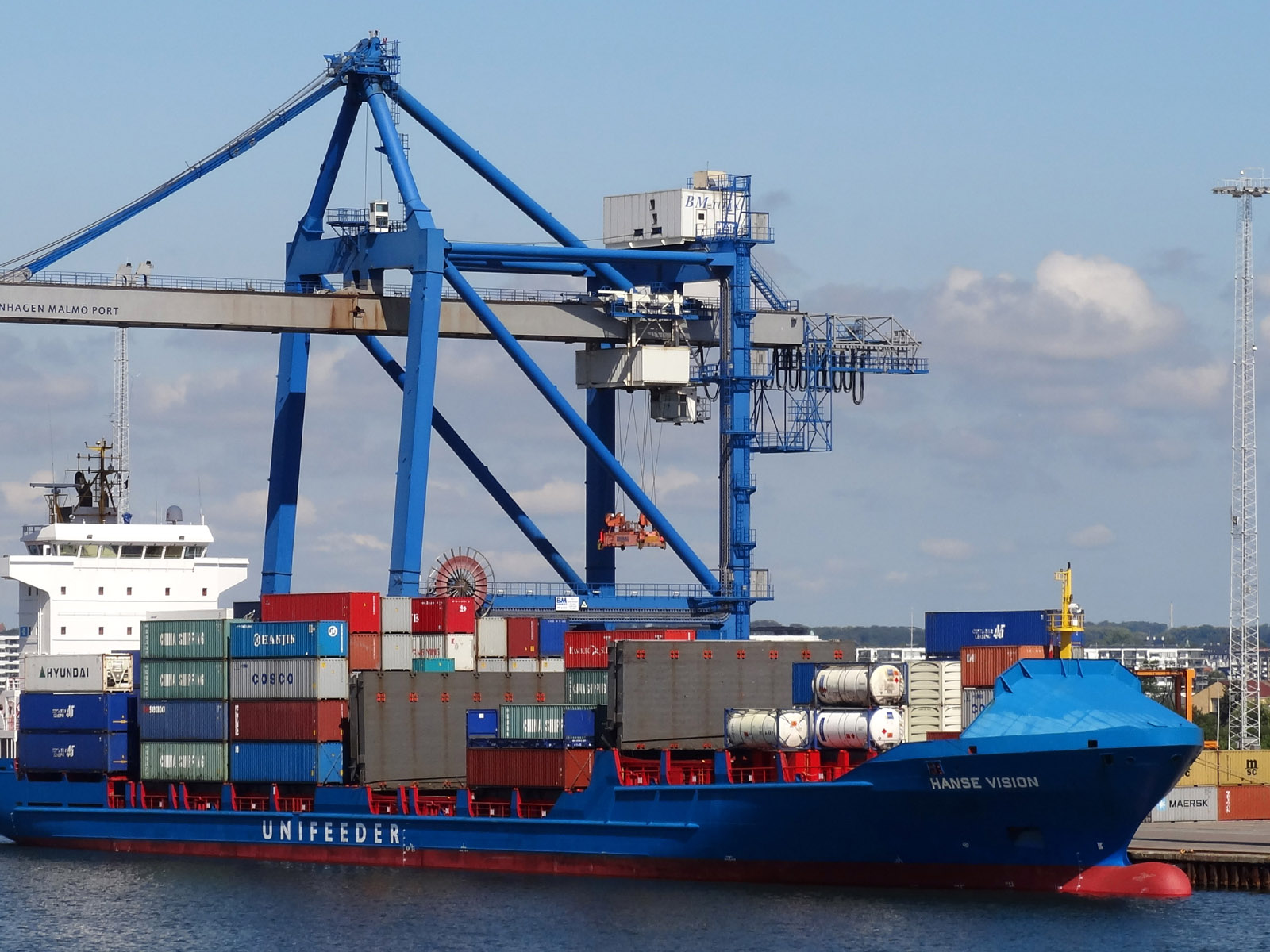 Why, then, have have been and will continue to be net economic costs from Brexit?
Why, then, have have been and will continue to be net economic costs from Brexit?
The main reason is that the UK has moved from being in the EU Single Market, a system of virtually friction-free trade and factor movements, to a trade agreement (the TCA) which, while being tariff and quota free for goods produced in the UK and the EU, involves considerable frictions. These frictions include greatly increased paperwork, which adds to the cost of trade. This has affected small businesses particularly, for whom the increased administrative costs generally represent a larger proportion of total costs than for large businesses.
Although EU tariffs are not imposed on goods wholly originating in the UK, they are imposed on many goods that are not. Under ‘rules of origin’ regulations, an item can only count as a British good if sufficient value or weight is added. If insufficient value is added, then customs charges are imposed. Similar rules apply from 1 January 2022 on goods imported into the Great Britain from the EU which are only partially made in the EU. The issue of rules of origin was examined in the blog A free-trade deal? Not really. Goods being moved between Great Britain and the EU are checked at ports and can only be released into the market if they have a valid customs declaration and have received customs clearance. This involves considerable paperwork for businesses. As the article below from Internet Retailing states:
UK and EU importers need to be able to state the origin of the goods they trade between the UK and EU. For some goods, exporters need to hold supplier declarations to show where they were made and where materials came from. From January 1, those issuing statements of origin for goods exported to the EU will need to hold the supplier declarations at the time that they export their goods, whereas up till now the those declarations could be supplied later.
Brexit has had considerable effects on the labour market. Many EU citizens returned to their home countries both before and after Brexit, creating labour shortages in many sectors. Also, it has become more difficult for UK citizens to work in the EU, with work permits required in most cases. This has had a major effect on some UK workers. For example, British touring musicians and performers find it difficult to tour, given the lack of an EU-wide visa waiver, ‘cabotage’ rules that ban large UK tour vehicles from making more than two stops before returning to the UK and new paperwork needed to take certain musical instruments into the EU.
Another issue concerns investment. Will greater restrictions in trade between the EU and the UK reduce inward investment to the UK, with international companies preferring to locate factories producing for Europe in the EU rather than the UK as the EU market is bigger than the UK market? So far, fears have not been realised as inward investment has held up well, partly because of the rapid bounce-back from the pandemic and the successful roll-out of the vaccine. Nevertheless, the UK’s dominance as a recipient of inward investment to Europe has been replaced by a three-way dominance of the UK, France and Germany, with France being the biggest recipient of the three in 2019 and 2020. It will be some years before the extent to which Brexit has damaged inward investment to the UK, if at all, becomes clear.
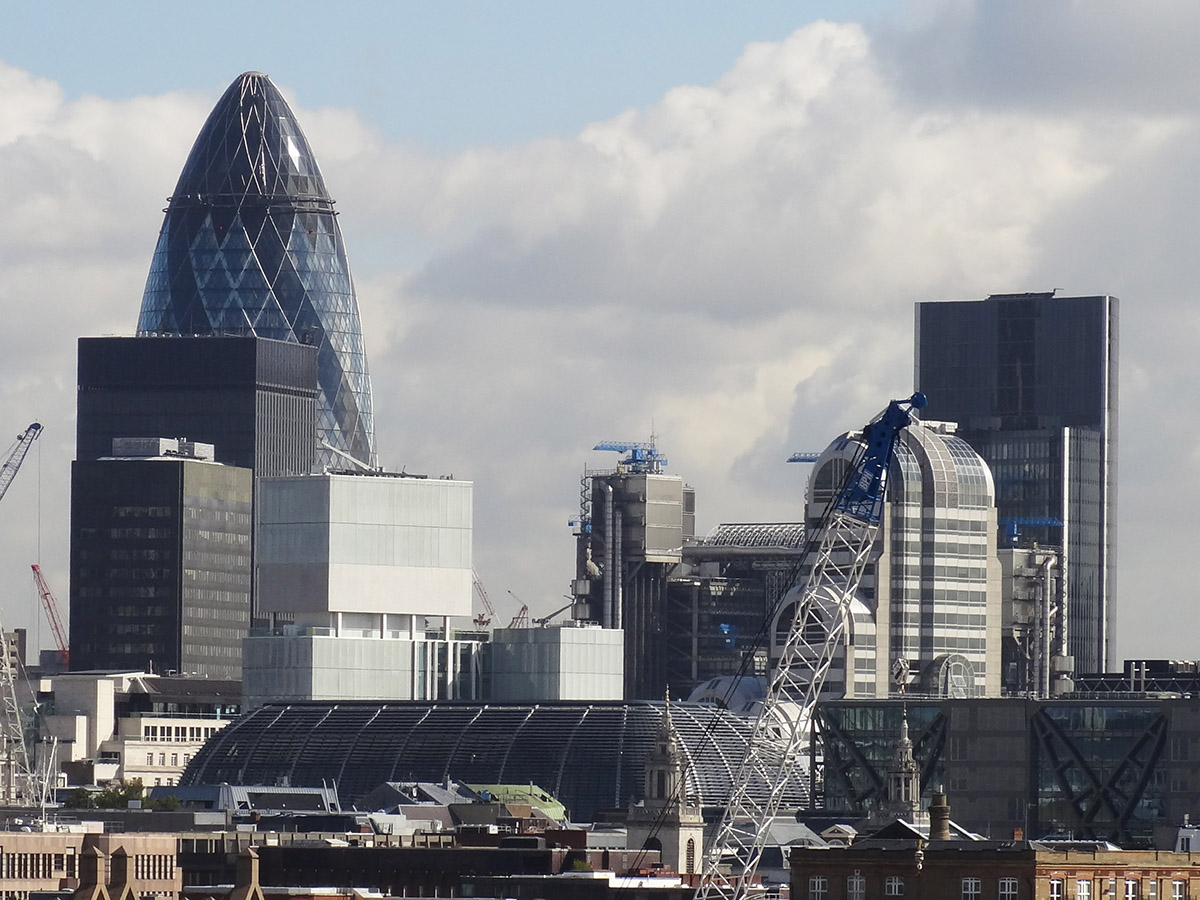 The TCA applies to goods, not services. One of the major concerns has been the implications of Brexit for financial services and the City of London. Before Brexit, financial institutions based in the UK had ‘passporting rights’. These allowed them to offer financial services across EU borders and to set up branches in EU countries easily. With the ending of the transition period in December 2020, these passporting rights have ceased. The EU has granted temporary ‘equivalence’ to such institutions until June 2022, but then it comes to an end and there is no prospect of deal on financial services in the near future. Indeed, the EU is actively trying to encourage more financial activity to move from the UK to the EU. Several financial institutions have already relocated all or part of their business from London to the EU.
The TCA applies to goods, not services. One of the major concerns has been the implications of Brexit for financial services and the City of London. Before Brexit, financial institutions based in the UK had ‘passporting rights’. These allowed them to offer financial services across EU borders and to set up branches in EU countries easily. With the ending of the transition period in December 2020, these passporting rights have ceased. The EU has granted temporary ‘equivalence’ to such institutions until June 2022, but then it comes to an end and there is no prospect of deal on financial services in the near future. Indeed, the EU is actively trying to encourage more financial activity to move from the UK to the EU. Several financial institutions have already relocated all or part of their business from London to the EU.
The articles below examine these costs and many give examples of specific firms and how Brexit has impacted on them. As you will see, there are quite a lot of articles and you might just want to select a few. Or if this blog is being used for classes, the articles could be assigned to different students and used as the basis for discussion.
The future
Whilst the additional costs in terms of trade restrictions and paperwork are clear, it is too soon to know how well firms will be able to overcome them. Many of those who support Brexit argue that the UK now has freedom to impose lighter UK regulations on firms and that this could encourage economic growth. Other supporters of Brexit, however, argue that Brexit gives the UK government the opportunity to impose tougher environmental, safety and employment protection regulations. Again, it is too soon to know what direction the current and future governments will move.
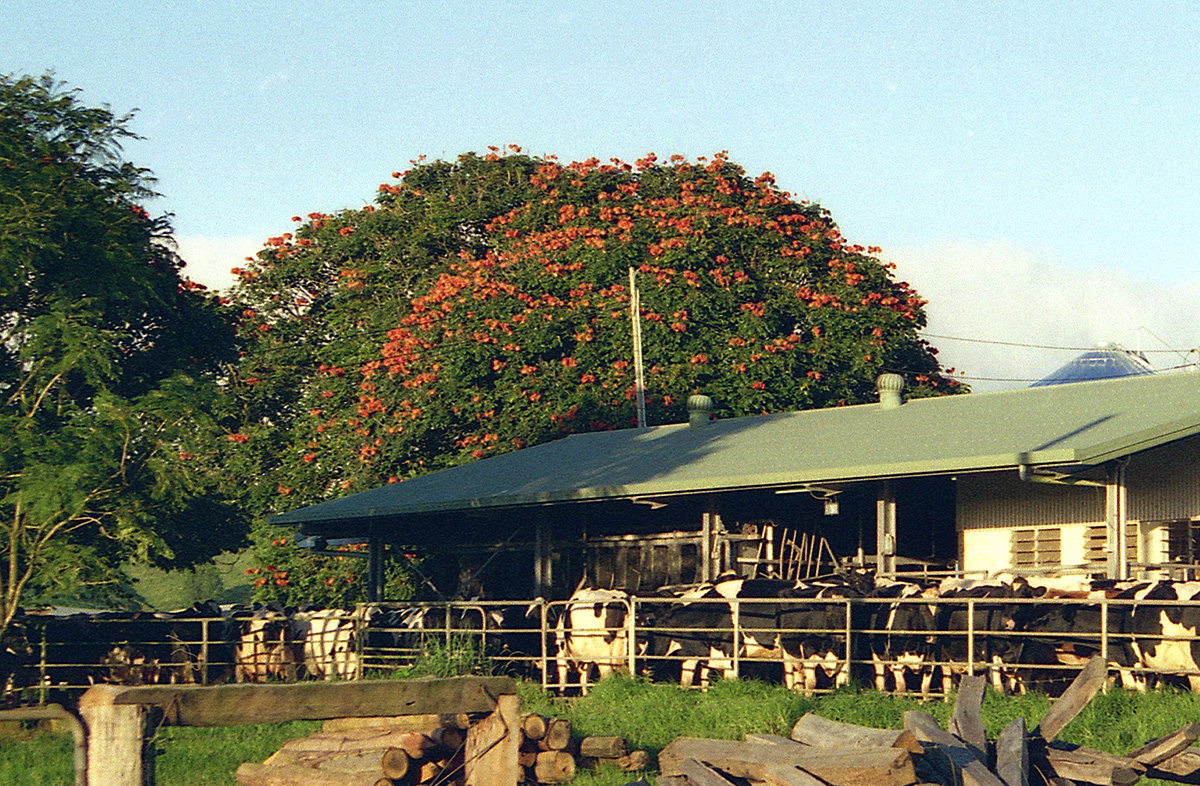 Then there is the question of trade deals with non-EU countries. How many will there be? When will they be signed? What will their terms be? So far, the deals signed have largely been just a roll-over of the deals the UK previously had with these countries as a member of the EU. The one exception is the deal with Australia. But the gains from that are tiny – an estimated gain of between 0.02 and 0.08 per cent of GDP from 2035 (compared with the estimated 4 per cent loss from leaving the EU’s Single Market). Also there are fears by the UK agricultural sector that cheaper food from Australia, produced under lower standards, could undercut UK farmers, especially after the end of a 15-year transitional period. So far, a trade deal with the USA seems a long way off.
Then there is the question of trade deals with non-EU countries. How many will there be? When will they be signed? What will their terms be? So far, the deals signed have largely been just a roll-over of the deals the UK previously had with these countries as a member of the EU. The one exception is the deal with Australia. But the gains from that are tiny – an estimated gain of between 0.02 and 0.08 per cent of GDP from 2035 (compared with the estimated 4 per cent loss from leaving the EU’s Single Market). Also there are fears by the UK agricultural sector that cheaper food from Australia, produced under lower standards, could undercut UK farmers, especially after the end of a 15-year transitional period. So far, a trade deal with the USA seems a long way off.
Then there are uncertainties about the Northern Ireland Protocol, under which there is an effective border between Great Britain and the EU down the Irish Sea, with free trade across the Northern Ireland–Republic of Ireland border. Will it be rewritten? Will the UK renege on its treaty commitments to impose checks on goods flowing between Northern Ireland and Great Britain?
Difficulties with the Northern Ireland Protocol, highlight another uncertainty and that is the political relationships between the UK and the EU, which have come under considerable strain with various post-Brexit disputes. Could these difficulties damage trade further and, if so, by how much?
What is clear is that there is considerable uncertainty about the future, a future that for some time is likely to be affected by the pandemic and its aftermath in both the UK and the EU. As the OBR states:
It is too early to reach definitive conclusions because:
- The terms of the TCA are yet to be implemented in full, meaning trade barriers will rise further as more of the deal comes into force. For example, the introduction of full checks on UK imports has recently been delayed until 2022.
- The full effect of the referendum outcome and higher trade barriers will probably take several years to come through, with businesses needing considerable time to adjust.
- The pandemic has delivered a large shock to UK and global trade volumes over the past 18 months, making it difficult to disentangle the separate effect of leaving the EU.
- Finally, trade data tend to be relatively volatile and are revised frequently, rendering any initial conclusions subject to change as the data are revised.
Analysis
Articles
 Analysis shows Brexit caused £12 billion of lost trade in October
Analysis shows Brexit caused £12 billion of lost trade in OctoberITV News, Joel Hills (10/12/21)
- Brexit: One year on, the economic impact is starting to show
BBC News, Faisal Islam (24/12/21)
- Brexit: The economic impact a year on
BBC News, Douglas Fraser (21/12/21)
- Brexit: what the UK/EU customs changes mean for businesses from January 1
The Conversation, Karen Jackson (21/12/21)
- Prices could rise even more as Brexit import rules are toughened up in New Year
i, David Parsley (23/12/21)
- Brexit one year on: the impact on the UK economy
Financial Times, Chris Giles (23/12/21)
- Businesses struggle to prepare for UK’s post-Brexit import controls
Financial Times, Peter Foster, Marton Dunai and James Shotter (29/12/21)
- How the post-Brexit rules for EU trade are set to change at New Year
Internet Retailing, Chloe Rigby (17/12/21)
- Post-Brexit Guide: Five years since UK vote, where are we now – and how did we get here?
Euronews, Alasdair Sandford (20/12/21)
- A year since Brexit: Will new UK import controls complicate trade further?
Euronews, Alasdair Sandford (31/12/21)
- Brexit passporting: Little appetite among EU finance firms to stay in London as FCA applications disappoint
City A.M., Michiel Willems (30/12/21)
- Brexit red tape: More disruption to food supplies looming as EU is ‘not prepared’ for new UK import rules that take effect on 1 January
City A.M., Michiel Willems (30/12/21)
- Just a Year of Brexit Has Thumped U.K.’s Economy and Businesses
Bloomberg, Joe Mayes (22/12/21)
- Frosty Resignation Leaves Boris Johnson With Brexit Meltdown
Bloomberg, Therese Raphael (20/12/21)
- What a Year of Brexit Brought U.K. Companies: Higher Costs and Endless Forms
New York Times, Eshe Nelson (29/12/21)
- The anniversary of ‘getting Brexit done’ is more a wake than a celebration
Independent, Vince Cable (28/12/21)
- Brexit customs controls coming in January ‘disastrous’ for UK traders, business chiefs warn
Independent, Adam Forrest (24/12/21)
- Brexit: ‘the biggest disaster any government has ever negotiated’
The Guardian, Lisa O’Carroll (27/12/21)
- What the UK and hauliers can expect from long-delayed Brexit controls
The Guardian, Lisa O’Carroll (29/12/21)
- Brexit one year on: so how’s it going?
The Observer, Toby Helm (25/12/21)
Survey
Questions
- Summarise the reasons why the volume of trade between the UK and the EU is likely to be below the level it would have been if the UK had remained in the Single Market.
- How can economists disentangle the effects of Brexit from the effects of Covid? How is the ‘doppelgänger UK’ model used for this purpose?
- Are there any economic advantages of the UK’s exit from the EU? If so, what are they and how significant are they?
- The OBR forecasts that there will be a long-term reduction of 15 per cent in both UK imports from the EU and UK exports to the EU. What might cause this figure to be (a) greater than 15 per cent; (b) less than 15 per cent?
 Mid-December saw a rapid rise in coronavirus cases in London and the South East and parts of eastern and central southern England. This was due to a new strain of Covid, which is more infectious. In response, the UK government introduced a new tier 4 level of restrictions for these areas from 20 December. These amount to a complete lockdown. The devolved administrations also announced lockdowns. In addition, the Christmas relaxation of rules was tightened across the UK. Households (up to three) were only allowed to get together on Christmas day and not the days either side (or one day between 23 and 27 December in the case of Northern Ireland). Tier 4 residents were not allowed to visit other households even on Christmas day.
Mid-December saw a rapid rise in coronavirus cases in London and the South East and parts of eastern and central southern England. This was due to a new strain of Covid, which is more infectious. In response, the UK government introduced a new tier 4 level of restrictions for these areas from 20 December. These amount to a complete lockdown. The devolved administrations also announced lockdowns. In addition, the Christmas relaxation of rules was tightened across the UK. Households (up to three) were only allowed to get together on Christmas day and not the days either side (or one day between 23 and 27 December in the case of Northern Ireland). Tier 4 residents were not allowed to visit other households even on Christmas day.
The lockdowns aimed to slow the spread of the virus and reduce deaths. But this comes at a considerable short-term economic cost, especially to the retail and leisure sectors, which are required to close while the lockdowns remain in force. In taking the decision to introduce these tougher measures, the four administrations had to weigh up the benefits of reduced deaths and illness and pressure on the NHS against the short-term economic damage. As far a long-term economic damage is concerned, this might be even greater if lockdowns were not imposed and the virus spread more rapidly.
In a blog back in September, we examined the use of cost–benefit analysis (CBA) to aid decision-making about such decisions. The following is an updated version of that blog.
The use of cost–benefit analysis
 It is commonplace to use cost–benefit analysis (CBA) in assessing public policies, such as whether to build a new hospital, road or rail line. Various attempts in the past few months have been made to use CBA in assessing policies to reduce the spread of the coronavirus. These have involved weighing up the costs and benefits of national or local lockdowns or other containment measures. But, as with other areas where CBA is used, there are serious problems of measuring costs and benefits and assessing risks. This is particularly problematic where human life is involved and where a value has to be attached to a life saved or lost.
It is commonplace to use cost–benefit analysis (CBA) in assessing public policies, such as whether to build a new hospital, road or rail line. Various attempts in the past few months have been made to use CBA in assessing policies to reduce the spread of the coronavirus. These have involved weighing up the costs and benefits of national or local lockdowns or other containment measures. But, as with other areas where CBA is used, there are serious problems of measuring costs and benefits and assessing risks. This is particularly problematic where human life is involved and where a value has to be attached to a life saved or lost.
The first step in a CBA is to identify the benefits and costs of the policy.
Identifying the benefits and costs of the lockdown
The benefits of the lockdown include lives saved and a reduction in suffering, not only for those who otherwise would have caught the virus but also for their family and friends. It also includes lives saved from other diseases whose treatment would have been put (even more) on hold if the pandemic had been allowed to rage and more people were hospitalised with the virus. In material terms, there is the benefit of saving in healthcare and medicines and the saving of labour resources. Then there are the environmental gains from less traffic and polluting activities.
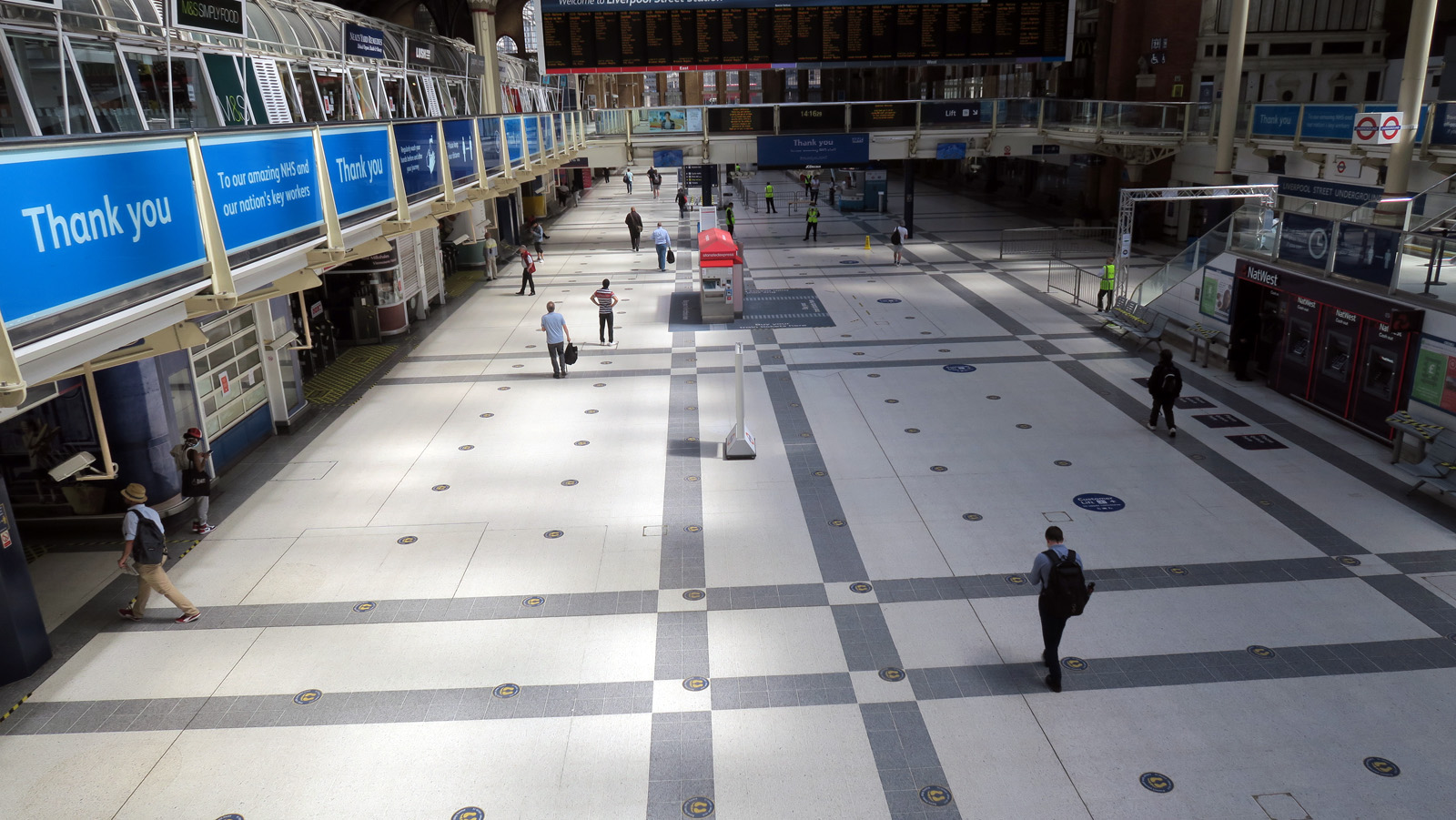 On the cost side, there is the decline in output from businesses being shut and people being furloughed or not being able to find work. There is also a cost if schools have to close and children’s education is thereby compromised. Then there is the personal cost to people of being confined to home, a cost that could be great for those in cramped living conditions or in abusive relationships. Over the longer term, there is a cost from people becoming deskilled and firms not investing – so-called scarring effects. Here there are the direct effects and the multiplier effects on the rest of the economy.
On the cost side, there is the decline in output from businesses being shut and people being furloughed or not being able to find work. There is also a cost if schools have to close and children’s education is thereby compromised. Then there is the personal cost to people of being confined to home, a cost that could be great for those in cramped living conditions or in abusive relationships. Over the longer term, there is a cost from people becoming deskilled and firms not investing – so-called scarring effects. Here there are the direct effects and the multiplier effects on the rest of the economy.
Estimating uncertain outcomes
 It is difficult enough identifying all the costs and benefits, but many occur in the future and here there is the problem of estimating the probability of their occurrence and their likely magnitude. Just how many lives will be saved from the policy and just how much will the economy be affected? Epidemiological and economic models can help, but there is a huge degree of uncertainty over predictions made about the spread of the disease, especially with a new strain of the virus, and the economic effects, especially over the longer term.
It is difficult enough identifying all the costs and benefits, but many occur in the future and here there is the problem of estimating the probability of their occurrence and their likely magnitude. Just how many lives will be saved from the policy and just how much will the economy be affected? Epidemiological and economic models can help, but there is a huge degree of uncertainty over predictions made about the spread of the disease, especially with a new strain of the virus, and the economic effects, especially over the longer term.
One estimate of the number of lives saved was made by Miles et al. in the NIESR paper linked below. A figure of 440 000 was calculated by subtracting the 60 000 actual excess deaths over the period of the first lockdown (March to June 2020) from a figure of 500 000 lives lost which, according to predictions, would have been the consequence of no lockdown. However, the authors acknowledge that this is likely to be a considerable overestimate because:
It does not account for changes in behaviour that would have occurred without the government lockdown; it does not count future higher deaths from side effects of the lockdown (extra cancer deaths for example); and it does not allow for the fact that some of those ‘saved’ deaths may just have been postponed because when restrictions are eased, and in the absence of a vaccine or of widespread immunity, deaths may pick up again.
Some help in estimating likely outcomes from locking down or not locking down the economy can be gained by comparing countries which have taken different approaches. The final article in the first list below compares the approaches in the UK and Sweden. Sweden had much lighter control measures than the UK and did not impose a lockdown. Using comparisons of the two approaches, the authors estimate that some 20 000 lives were saved by the lockdown – considerably less than the 440 000 estimate.
Estimating the value of a human life
To assess whether the saving of 20 000 lives was ‘worth it’, a value would have to be put on a life saved. Although putting a monetary value on a human life may be repugnant to many people, such calculations are made whenever a project is assessed which either saves or costs lives. As we say in the 10th edition of Economics (page 381):
Some people argue ‘You can’t put a price on a human life: life is priceless.’ But just what are they saying here? Are they saying that life has an infinite value? If so, the project must be carried out whatever the costs, and even if other benefits are zero! Clearly, when evaluating lives saved from the project, a value less than infinity must be given.
Other people might argue that human life cannot be treated like other costs and benefits and put into mathematical calculations. But what are these people saying? That the question of lives saved should be excluded from the cost–benefit study? If so, the implication is that life has a zero value! Again this is clearly not the case.
In practice, there are two approaches used to measure the value of a human life.
 The first uses the value of a statistical life (VSL). This is based on the amount extra the average person would need to be paid to work in a job where there is a known probability of losing their life. So if people on average needed to be paid an extra £10 000 to work in a job with a 1% chance of losing their life, they would be valuing a life at £1 000 000 (£10 000/0.01). To avoid the obvious problem of young people’s lives being valued the same as old people’s ones, even though a 20 year-old on average will live much longer than a 70 year-old, a more common measure is the value of a statistical life year (VSLY).
The first uses the value of a statistical life (VSL). This is based on the amount extra the average person would need to be paid to work in a job where there is a known probability of losing their life. So if people on average needed to be paid an extra £10 000 to work in a job with a 1% chance of losing their life, they would be valuing a life at £1 000 000 (£10 000/0.01). To avoid the obvious problem of young people’s lives being valued the same as old people’s ones, even though a 20 year-old on average will live much longer than a 70 year-old, a more common measure is the value of a statistical life year (VSLY).
A problem with VSL or VSLY measures is that they only take into account the quantity of years of life lost or saved, not the quality.
A second measure rectifies this problem. This is the ‘quality of life adjusted year (QALY)’. This involves giving a value to a year of full health and then reducing it according to how much people’s quality of life is reduced by illness, injury or poverty. The problem with this measure is the moral one that a sick or disabled person’s life is being valued less than the life of a healthy person. But it is usual to make such adjustments when considering medical intervention with limited resources.
One adjustment often made to QALYs or VSLYs is to discount years, so that one year gained would be given the full value and each subsequent year would be discounted by a certain percentage from the previous year – say, 3%. This would give a lower weighting to years in the distant future than years in the near future and hence would reduce the gap in predicted gains from a policy between young and old people.
Cost–effectiveness analysis (CEA)
Even using QALYs, there is still the problem of measuring life and health/sickness. A simpler approach is to use cost–effectiveness analysis (CEA). This takes a social goal, such as reducing the virus production rate (R) below 1 (e.g. to 0.9), and then finding the least-cost way of achieving this. As Mark Carney says in his third Reith Lecture:
As advocated by the economists Nick Stern and Tim Besley, the ideal is to define our core purpose first and then determine the most cost-effective interventions to achieve this goal. Such cost–effectiveness analysis explicitly seeks to achieve society’s values.
Cost–effectiveness analysis can take account of various externalities – as many of the costs will be – by giving them a value. For example, the costs of a lockdown to people in the hospitality sector or to the education of the young could be estimated and included in the costs. The analysis can also take into account issues of fairness by identifying the effects on inequality when certain groups suffer particularly badly from Covid or lockdown policies – groups such as the poor, the elderly and children. Achieving the goal of a specific R for the least cost, including external costs and attaching higher weights on the effects on certain groups then becomes the goal. As Carney says:
R brings public health and economics together. Relaxations of restrictions increase R, with economic, health and social consequences. A strategic approach to Covid is the best combination of policies to achieve the desired level of infection control at minimum economic cost with due respect for inequality, mental health and other social consequences, and calculating those costs then provides guidance when considering different containment strategies. That means paying attention to the impact on measures of fairness, the social returns to education, intergenerational equity and economic dynamism.
Conclusion
Given the uncertainties surrounding the measurement of the number of lives saved and the difficulties of assigning a value to them, and given the difficulties of estimating the economic and social effects of lockdowns, it is not surprising that the conclusions of a cost–benefit analysis, or even a cost–effectiveness analysis of a lockdown will be contentious. But, at least such analysis can help to inform discussion and drive future policy decisions. And a cost–effectiveness analysis can be a practical way of helping politicians reach difficult decisions about life and death and the economy.
Articles (original blog)
- When Does the Cure Become Worse Than the Disease? Applying Cost-Benefit Analysis to the Covid-19 Recovery
Journal of Medical Ethics, blog, Derek Soled, Michelle Bayefsky and Rahul Nayak (19/5/20)
- How much did the Covid-19 lockdown really cost the UK?
The Guardian, Larry Elliott (6/9/20)
- The UK lockdown: Balancing costs against benefits
VoxEU, David Miles (13/7/20)
- How Economists Calculate The Costs And Benefits Of COVID-19 Lockdowns
Forbes, Chris Conover (27/3/20)
- Coronavirus Is Giving Cost-Benefit Analysts Fits
Bloomberg, Cass R. Sunstein (12/5/20)
- “Stay at Home, Protect the National Health Service, Save Lives”: a cost benefit analysis of the lockdown in the United Kingdom
Wiley Online Library, David Miles, Mike Stedman and Adrian Heald (13/8/20)
- COVID-19 is Forcing Economists to Rethink the Value of Life
RealClearPolicy, James Broughel (20/8/20)
- A cost–benefit analysis of the COVID-19 disease
Oxford Review of Economic Policy, Robert Rowthorn and Jan Maciejowski (28/8/20)
- Living with Covid-19: Balancing Costs against Benefits in the Face of the Virus
National Institute Economic Review, vol. 253, David Miles, Mike Stedman and Adrian Heald (28/7/20)
- How Many Lives Has Lockdown Saved in the UK?
medRxiv, Rickard Nyman and Paul Ormerod (21/8/20)
Articles (additional)
Questions
- What are the arguments for and against putting a monetary value on a life saved?
- Are QALYs the best way of measuring lives saved from a policy such as a lockdown?
- Compare the relative merits of cost–benefit analysis and cost–effectiveness analysis.
- If the outcomes of a lockdown are highly uncertain, does this strengthen or weaken the case for a lockdown? Explain.
- What specific problems are there in estimating the number of lives saved by a lockdown?
- How might the age distribution of people dying from Covid-19 affect the calculation of the cost of these deaths (or the benefits or avoiding them)?
- How might you estimate the costs to people who suffer long-term health effects from having had Covid-19?
- What are the arguments for and against using discounting in estimating future QALYs?
- The Department of Transport currently uses a figure of £1 958 303 (in 2018 prices) for the value of a life saved from a road safety project. Find out how this is figure derived and comment on it. See Box 12.5 in Economics 10th edition and Accident and casualty costs, Tables RAS60001 and RA60003, (Department of Transport, 2019).
 The distinction between nominal and real values in one of the ‘threshold concepts’ in economics. These are concepts that are fundamental to a discipline and which occur again and again. The distinction between nominal and real values is particularly important when interpreting and analysing data. We show its importance here when analysing the latest retail sales data from the Office for National Statistics.
The distinction between nominal and real values in one of the ‘threshold concepts’ in economics. These are concepts that are fundamental to a discipline and which occur again and again. The distinction between nominal and real values is particularly important when interpreting and analysing data. We show its importance here when analysing the latest retail sales data from the Office for National Statistics. Chart 1 plots the value and volume of retail sales in Great Britain since 1996. (Click here for a PowerPoint of this and the other two charts). In value terms, retail sales spending increased by 165 per cent, whereas in volume terms, spending increased by 73 per cent. This difference is expected in the presence of rising prices, since nominal growth, as we have just noted, reflects both price and volume changes. The chart is notable for capturing two periods where the volume of retail spending ceased to grow. The first of these is following the global financial crisis of the late 2000s. The period from 2008 to 2013 saw the volume of retail sales stagnate and flatline with a recovery in volumes only really starting to take hold in 2014. Yet in nominal terms retail sales grew by around 16 per cent.
Chart 1 plots the value and volume of retail sales in Great Britain since 1996. (Click here for a PowerPoint of this and the other two charts). In value terms, retail sales spending increased by 165 per cent, whereas in volume terms, spending increased by 73 per cent. This difference is expected in the presence of rising prices, since nominal growth, as we have just noted, reflects both price and volume changes. The chart is notable for capturing two periods where the volume of retail spending ceased to grow. The first of these is following the global financial crisis of the late 2000s. The period from 2008 to 2013 saw the volume of retail sales stagnate and flatline with a recovery in volumes only really starting to take hold in 2014. Yet in nominal terms retail sales grew by around 16 per cent. The second of the two periods is the decline in the volume of retail sales from 2021. To help illustrate this more clearly, Chart 2 zooms in on retail sales over the past five years or so. We can see a significant divergence between the volume and value of retail sales. Between April 2021 and September 2023, the volume of retail sales fell by 11%. In contrast, the value of retail sales increased by 8.4%. The impact of the inflationary shock and the consequent cost-of-living crisis that emerged from 2021 is therefore demonstrated starkly by the chart, not least the severe drag that it has had on the volume of retail spending. This has meant that the aggregate volume of retail sales in September 2023 was only back to the levels of mid-2018.
The second of the two periods is the decline in the volume of retail sales from 2021. To help illustrate this more clearly, Chart 2 zooms in on retail sales over the past five years or so. We can see a significant divergence between the volume and value of retail sales. Between April 2021 and September 2023, the volume of retail sales fell by 11%. In contrast, the value of retail sales increased by 8.4%. The impact of the inflationary shock and the consequent cost-of-living crisis that emerged from 2021 is therefore demonstrated starkly by the chart, not least the severe drag that it has had on the volume of retail spending. This has meant that the aggregate volume of retail sales in September 2023 was only back to the levels of mid-2018. Finally, Chart 3 shows the patterns in the volumes of retailing by four categories since 2018: specifically, food stores, predominantly non-food stores, non-store retail, and automotive fuel. The largest fall in the volume of retail sales has been experienced by non-store retailing – largely online retailing. From its peak in December 2021, non-store retail sales decreased by 18% up to September 2023. While this needs to be set in the context of the volume of non-store retail purchases being 15% higher than in February 2020 before the pandemic lockdowns were introduced, it is nonetheless indicative of the pressures facing online retailers.
Finally, Chart 3 shows the patterns in the volumes of retailing by four categories since 2018: specifically, food stores, predominantly non-food stores, non-store retail, and automotive fuel. The largest fall in the volume of retail sales has been experienced by non-store retailing – largely online retailing. From its peak in December 2021, non-store retail sales decreased by 18% up to September 2023. While this needs to be set in the context of the volume of non-store retail purchases being 15% higher than in February 2020 before the pandemic lockdowns were introduced, it is nonetheless indicative of the pressures facing online retailers.  ‘Concern’ for retailers ahead of Christmas as sales and shopper confidence fall
‘Concern’ for retailers ahead of Christmas as sales and shopper confidence fall HS2 has been cancelled north of Birmingham. The prime minister, Rishi Sunak, announced this at the Conservative Party conference on 4 October, some 13 years after the plan was adopted by the Labour government to build a new high-speed railway from London to Birmingham, which then would branch into two legs – one to Manchester and one to Leeds. The initial budget for this was £15.8bn to £17.4bn. When it came to power, the Conservative-Liberal coalition government ordered a review of the plan. In light of this, the government
HS2 has been cancelled north of Birmingham. The prime minister, Rishi Sunak, announced this at the Conservative Party conference on 4 October, some 13 years after the plan was adopted by the Labour government to build a new high-speed railway from London to Birmingham, which then would branch into two legs – one to Manchester and one to Leeds. The initial budget for this was £15.8bn to £17.4bn. When it came to power, the Conservative-Liberal coalition government ordered a review of the plan. In light of this, the government  The project was divided into two phases: Phase 1 to Birmingham and Phase 2 to Manchester and Leeds. The Phase 1 parliamentary bill became law in February 2017 and soon after that, various construction contracts were signed. After some delays, preparation for construction work began in June 2019. There was growing doubt, however, about the viability of the northern legs.
The project was divided into two phases: Phase 1 to Birmingham and Phase 2 to Manchester and Leeds. The Phase 1 parliamentary bill became law in February 2017 and soon after that, various construction contracts were signed. After some delays, preparation for construction work began in June 2019. There was growing doubt, however, about the viability of the northern legs.

 In order to judge whether the diversion of funds represents a better use of money, a full analysis of costs and benefits of the various projects would need to be conducted and compared with an updated cost–benefit analysis of continuing with the legs to Manchester and the east Midlands and possibly reinstating the Leeds leg too.
In order to judge whether the diversion of funds represents a better use of money, a full analysis of costs and benefits of the various projects would need to be conducted and compared with an updated cost–benefit analysis of continuing with the legs to Manchester and the east Midlands and possibly reinstating the Leeds leg too. The benefits originally identified from HS2 will now be lost. It is not just that the northern legs of HS2 would have provided faster travel to Manchester and Leeds, but the new lines would have reduced congestion for slower trains and freight on existing lines. This has been the experience in countries such as Japan and Spain, which have invested heavily in new, separate high-speed lines.
The benefits originally identified from HS2 will now be lost. It is not just that the northern legs of HS2 would have provided faster travel to Manchester and Leeds, but the new lines would have reduced congestion for slower trains and freight on existing lines. This has been the experience in countries such as Japan and Spain, which have invested heavily in new, separate high-speed lines. The United Nations International Panel on Climate Change (IPCC) has just published its
The United Nations International Panel on Climate Change (IPCC) has just published its  Deep, rapid and sustained reductions in emissions would slow down the rise in global temperatures, but even with such reductions, temperatures will still exceed 1.5°C in the next few years and, even under the best-case scenario, would not fall below 1.5°C again until the end of the 21st century. Under more pessimistic scenarios, global temperatures could rise to 2.7°C above pre-industrial levels by the end of the century under an intermediate greenhouse gas emissions scenario and to 4.4°C under a very high emissions scenario. Anything above 2°C would be likely to have catastrophic effects. The longer countries wait to take action, the greater the rise in global temperatures and hence the greater the damage and the more costly it will be to rectify it.
Deep, rapid and sustained reductions in emissions would slow down the rise in global temperatures, but even with such reductions, temperatures will still exceed 1.5°C in the next few years and, even under the best-case scenario, would not fall below 1.5°C again until the end of the 21st century. Under more pessimistic scenarios, global temperatures could rise to 2.7°C above pre-industrial levels by the end of the century under an intermediate greenhouse gas emissions scenario and to 4.4°C under a very high emissions scenario. Anything above 2°C would be likely to have catastrophic effects. The longer countries wait to take action, the greater the rise in global temperatures and hence the greater the damage and the more costly it will be to rectify it. The third problem concerns the distribution of the costs and benefits of action. The major emitters of carbon are the rich countries, while the major sufferers are poor people in countries subject to drought, flooding and rising sea levels. Not surprisingly, who should cut down on emissions and pay for the mitigation necessary in many of the poorer countries is a difficult political issue, which is why it’s much easier to say what needs to be achieved overall than precisely what measures should be taken by which countries.
The third problem concerns the distribution of the costs and benefits of action. The major emitters of carbon are the rich countries, while the major sufferers are poor people in countries subject to drought, flooding and rising sea levels. Not surprisingly, who should cut down on emissions and pay for the mitigation necessary in many of the poorer countries is a difficult political issue, which is why it’s much easier to say what needs to be achieved overall than precisely what measures should be taken by which countries. The use of taxes to reduce activities with negative environmental externalities is illustrated in the diagram (click
The use of taxes to reduce activities with negative environmental externalities is illustrated in the diagram (click  A simpler method for dealing with environmental externalities is ban certain activities that omit CO2. For example, in the UK there will be a ban on the sale of new petrol and diesel cars and vans from 2030 (with the exception of some low-emission hybrids until 2035). In the EU there will be a similar ban from 2035. Clearly, such measures are only suitable when there are non-emitting alternatives.
A simpler method for dealing with environmental externalities is ban certain activities that omit CO2. For example, in the UK there will be a ban on the sale of new petrol and diesel cars and vans from 2030 (with the exception of some low-emission hybrids until 2035). In the EU there will be a similar ban from 2035. Clearly, such measures are only suitable when there are non-emitting alternatives. The UK left the EU on 31 January 2020 and entered an 11-month transition phase during which previous arrangements largely applied. On 30 December 2020, the UK and the EU signed the
The UK left the EU on 31 January 2020 and entered an 11-month transition phase during which previous arrangements largely applied. On 30 December 2020, the UK and the EU signed the  Why, then, have have been and will continue to be net economic costs from Brexit?
Why, then, have have been and will continue to be net economic costs from Brexit?  The TCA applies to goods, not services. One of the major concerns has been the implications of Brexit for financial services and the City of London. Before Brexit, financial institutions based in the UK had ‘passporting rights’. These allowed them to offer financial services across EU borders and to set up branches in EU countries easily. With the ending of the transition period in December 2020, these passporting rights have ceased. The EU has granted temporary ‘equivalence’ to such institutions until June 2022, but then it comes to an end and there is no prospect of deal on financial services in the near future. Indeed, the EU is actively trying to encourage more financial activity to move from the UK to the EU. Several financial institutions have already relocated all or part of their business from London to the EU.
The TCA applies to goods, not services. One of the major concerns has been the implications of Brexit for financial services and the City of London. Before Brexit, financial institutions based in the UK had ‘passporting rights’. These allowed them to offer financial services across EU borders and to set up branches in EU countries easily. With the ending of the transition period in December 2020, these passporting rights have ceased. The EU has granted temporary ‘equivalence’ to such institutions until June 2022, but then it comes to an end and there is no prospect of deal on financial services in the near future. Indeed, the EU is actively trying to encourage more financial activity to move from the UK to the EU. Several financial institutions have already relocated all or part of their business from London to the EU. Then there is the question of trade deals with non-EU countries. How many will there be? When will they be signed? What will their terms be? So far, the deals signed have largely been just a roll-over of the deals the UK previously had with these countries as a member of the EU. The one exception is the
Then there is the question of trade deals with non-EU countries. How many will there be? When will they be signed? What will their terms be? So far, the deals signed have largely been just a roll-over of the deals the UK previously had with these countries as a member of the EU. The one exception is the  Mid-December saw a rapid rise in coronavirus cases in London and the South East and parts of eastern and central southern England. This was due to a new strain of Covid, which is more infectious. In response, the UK government introduced a new
Mid-December saw a rapid rise in coronavirus cases in London and the South East and parts of eastern and central southern England. This was due to a new strain of Covid, which is more infectious. In response, the UK government introduced a new  It is commonplace to use cost–benefit analysis (CBA) in assessing public policies, such as whether to build a new hospital, road or rail line. Various attempts in the past few months have been made to use CBA in assessing policies to reduce the spread of the coronavirus. These have involved weighing up the costs and benefits of national or local lockdowns or other containment measures. But, as with other areas where CBA is used, there are serious problems of measuring costs and benefits and assessing risks. This is particularly problematic where human life is involved and where a value has to be attached to a life saved or lost.
It is commonplace to use cost–benefit analysis (CBA) in assessing public policies, such as whether to build a new hospital, road or rail line. Various attempts in the past few months have been made to use CBA in assessing policies to reduce the spread of the coronavirus. These have involved weighing up the costs and benefits of national or local lockdowns or other containment measures. But, as with other areas where CBA is used, there are serious problems of measuring costs and benefits and assessing risks. This is particularly problematic where human life is involved and where a value has to be attached to a life saved or lost. On the cost side, there is the decline in output from businesses being shut and people being furloughed or not being able to find work. There is also a cost if schools have to close and children’s education is thereby compromised. Then there is the personal cost to people of being confined to home, a cost that could be great for those in cramped living conditions or in abusive relationships. Over the longer term, there is a cost from people becoming deskilled and firms not investing – so-called scarring effects. Here there are the direct effects and the multiplier effects on the rest of the economy.
On the cost side, there is the decline in output from businesses being shut and people being furloughed or not being able to find work. There is also a cost if schools have to close and children’s education is thereby compromised. Then there is the personal cost to people of being confined to home, a cost that could be great for those in cramped living conditions or in abusive relationships. Over the longer term, there is a cost from people becoming deskilled and firms not investing – so-called scarring effects. Here there are the direct effects and the multiplier effects on the rest of the economy. It is difficult enough identifying all the costs and benefits, but many occur in the future and here there is the problem of estimating the probability of their occurrence and their likely magnitude. Just how many lives will be saved from the policy and just how much will the economy be affected? Epidemiological and economic models can help, but there is a huge degree of uncertainty over predictions made about the spread of the disease, especially with a new strain of the virus, and the economic effects, especially over the longer term.
It is difficult enough identifying all the costs and benefits, but many occur in the future and here there is the problem of estimating the probability of their occurrence and their likely magnitude. Just how many lives will be saved from the policy and just how much will the economy be affected? Epidemiological and economic models can help, but there is a huge degree of uncertainty over predictions made about the spread of the disease, especially with a new strain of the virus, and the economic effects, especially over the longer term. The first uses the value of a statistical life (VSL). This is based on the amount extra the average person would need to be paid to work in a job where there is a known probability of losing their life. So if people on average needed to be paid an extra £10 000 to work in a job with a 1% chance of losing their life, they would be valuing a life at £1 000 000 (£10 000/0.01). To avoid the obvious problem of young people’s lives being valued the same as old people’s ones, even though a 20 year-old on average will live much longer than a 70 year-old, a more common measure is the value of a statistical life year (VSLY).
The first uses the value of a statistical life (VSL). This is based on the amount extra the average person would need to be paid to work in a job where there is a known probability of losing their life. So if people on average needed to be paid an extra £10 000 to work in a job with a 1% chance of losing their life, they would be valuing a life at £1 000 000 (£10 000/0.01). To avoid the obvious problem of young people’s lives being valued the same as old people’s ones, even though a 20 year-old on average will live much longer than a 70 year-old, a more common measure is the value of a statistical life year (VSLY).